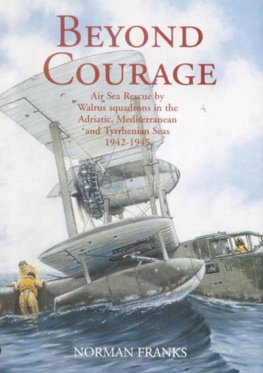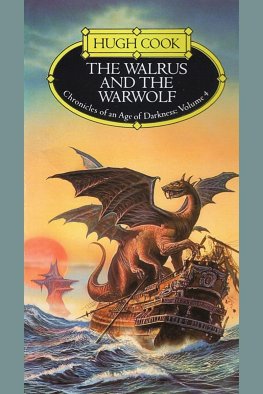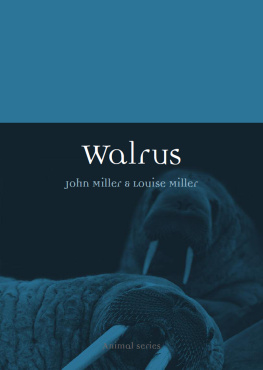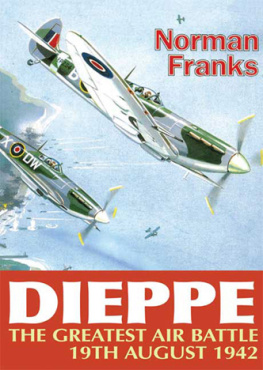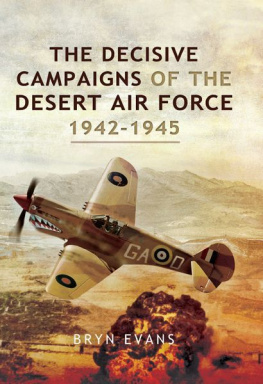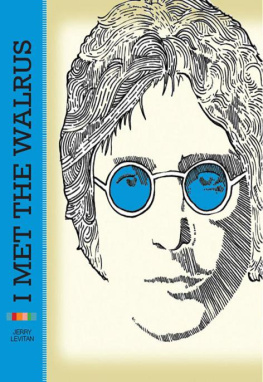All rights reserved. No part of this publication may be reproduced, stored in a retrieval system, or transmitted in any form or by any means, electronic, mechanical, photocopying, recording, or otherwise, without the prior permission of the copyright owner.
Printed and bound in Great Britain by Biddles Ltd, Guildford and Kings Lynn www.biddles.co.uk
ACKNOWLEDGEMENTS
When several years ago I began researching for a book on all Walrus air sea rescue squadrons, I was in touch with numerous pilots and air gunners who flew in these amphibian aircraft, as well as a number of the men they had rescued. I have acknowledged the help of those involved in operations around the UK in Another Kind of Courage, so the following are a list of rescuers and rescuees of the Mediterranean period, a few of the former of whom are the same. Every one of them has my sincere thanks for recollections, photographs, and so on, although in the interim, I know that several of them have passed away.
Walrus aircrew: Arnold Divers DFM, Richard G Eccles, Trevor H Humphrey, Lisle H Newman, Hamish Reid and Alex G Stevens DFC.
The rescued: Lt-Col James A Adams, R Greg Burdick, Maj Richard C Curtis, G/Capt W G G Duncan Smith DSO DFC, Col Leland S Ford, Herbert A Guiness, Lt-Col Raymond F Harmeyer, Lt-Col John C kelly, Lt-Col Paul G McArthur, William E McGonigle, Lindsey Polwin, Lt-Col Gordon H Rich, Lt-Col Bert S Sanborn and John Schwartz.
Others: Robert F Cutler, Edwin Dalrymple, Col Hugh D Dow, Alison Duffield, John E Fawcett, Robert Karstensen, Joyce Lambert, Sidney Loadenthal, Lyle McCarty, Lt-Col Herbert L Speas Jr., Michael Schoeman, Christopher F Shores, S/Ldr Andy Thomas and G C Tomlinson.
Thanks too go to John Davies and Louise King of Grub Street, and to Colin and Rose Smith of Vector Fine Art.
Thanks to the following for contributing photographs: N F Duke; L Polwin; W A Rance; 12th BG Assn; A Divers; 350th Fg Archives via H Dow; Mrs J Lambert; R Eccles; P G McArthur; E Dalrymple; L H Newman; J C kelly; Andy Thomas; R J Teligzau Sr via Curtis; W G G Duncan Smith; W McGonigle; J A Adams; R F Harmeyer; J A Reid; D Hartwell; V Voss; R C Curtis; J Schwartz; J E Fawcett; B S Sanborn; T H Humphrey; R Guest; H Guiness; L S Ford and G Burdick.
INTRODUCTION
In 1994 PSL published my book Another Kind of Courage covering the Supermarine Walrus squadrons, which operated around the United Kingdom during World War Two. It was originally intended to incorporate within it the activities and rescues of the Walrus squadrons in the Mediterranean between 1942-45, but that would have made the book too large. Unhappily, therefore, it was decided to extract the Mediterranean chapters.
However, John Davies of Grub Street Publishing has made the decision to complete the Walrus air sea rescue story by producing this book on the Mediterranean units, which is most gratifying. That is because these stories of exceptional bravery by the rescue aircrew can now be shared with the general public and aviation enthusiasts, as well as the tales of those they saved from watery graves or captivity.
As those who have read Another Kind of Courage will already appreciate, it took extraordinary courage to land this comparatively small, single-engined amphibian aeroplane on the sea. The sea was often far from calm, rescues often under the eyes of the enemy, and the pilots were aware that due to weight of extra bodies, or the extremes of weather, not to mention a high running sea, the Walrus might be unable to take off again. Yet the men of the Walrus squadrons rarely hesitated, knowing full well that the quicker the downed airmen were out of the water, the better their chances of survival.
Although we are talking of the Mediterranean rather than the English Channel or the North Sea, the waters off the North African coast, or off either side of the Italian mainland those extending into the Adriatic or the Tyrrhenian Seas were no less cold. Anyone enjoying seaside holidays along any of the Italian coasts, or Sardinia and Corsica, will only know the warmth of coastal seas in high summer. Shocked and perhaps wounded airmen who came down miles from shore, often completely out of sight of land, will describe a very different tale of water temperatures. Even if they were in a dinghy, the heat of a summer sun beating down on them, and little or no drinking water, gave them another set of problems, so the sooner they were rescued the better.
What follows, therefore, are the stories of the men who came down on the sea and those very special pilots and observers who unhesitatingly flew out to find them and then pick them up. It took a special kind of courage and, as the RAF and Royal Navy will tell you, it still does today.
Chapter 1
NORTH AFRICA
By 1942 the air sea rescue organisations operating from the UK for aircraft missing around the British Isles and off the hostile coasts of France, Belgium or Holland were becoming well established. What had begun as mere flights, equipped with a few spotter and rescue aircraft had now grown into squadrons. From the Navys point of view, their High Speed Launches, also located at strategic places around the British coasts, were either working alone or cooperating with the RAF rescue squadrons.
There was a friendly rivalry between them, the Navy often trying to locate and rescue downed airmen before the Walrus amphibians arrived, while the Walrus men would take delight in being better able to find and rescue men much nearer the enemy coasts, often plucking them from minefields or from under the very noses of coastal guns sometimes even gunfire.
However, the Walrus crews had soon discovered that with the increasing sizes of aircrew in some bomber aircraft, it didnt take too many survivors to fill and overload the small Walrus flying-boat. More often than not this meant a long-distance taxi ride back to England, but at least the men were out of the cold sea, each moment taking them closer to safety. In these circumstances cooperation with the Navy launches sometimes meant a transfer to the boats, leaving the Walrus free to take off again, or possibly able to become airborne in order to take wounded men to hospital.
There had been little organised air sea rescue till 1941, the early flights being only equipped with Westland Lysanders, Boulton Paul Defiant single-engined turret fighters and Hurricanes, which could only locate downed airmen, and then direct boats to them. It was obviously far more expedient for survival for the aircraft who found men in the sea to have the means to pick them up. Hence the arrival of the Supermarine Walrus amphibian, hitherto an aircraft used for spotting for the Navy and only carried on the larger warships.
There had been little need for air sea rescue in the Middle East in the early months of the war. What action there was around Malta could be contained by Naval launches, while on the nearby continent of Africa, the desert war was mainly fought over the land. However, as things hotted up in the Mediterranean it soon became apparent that a proper air sea rescue organisation was needed as more and more operations were flown over the sea.

